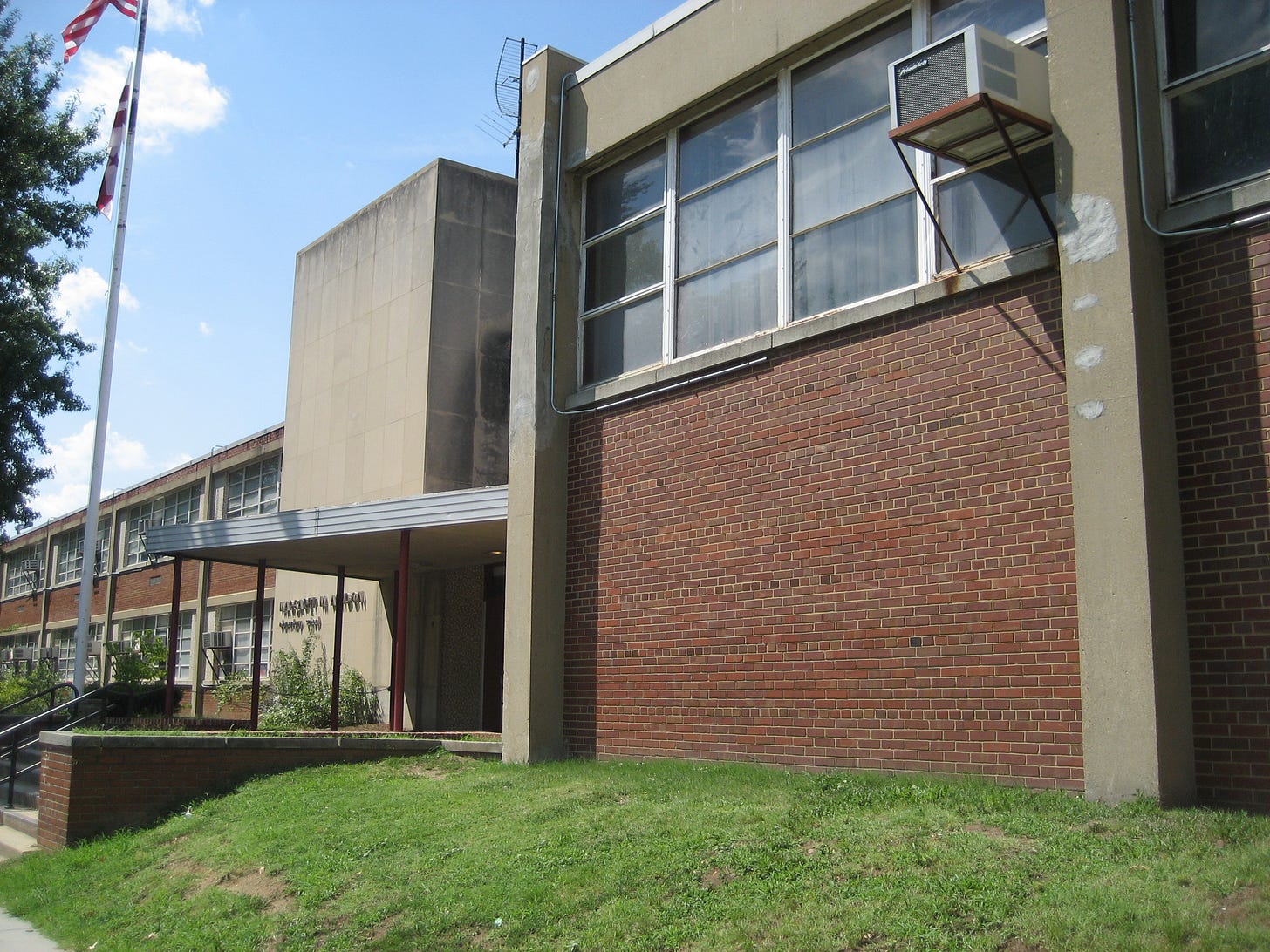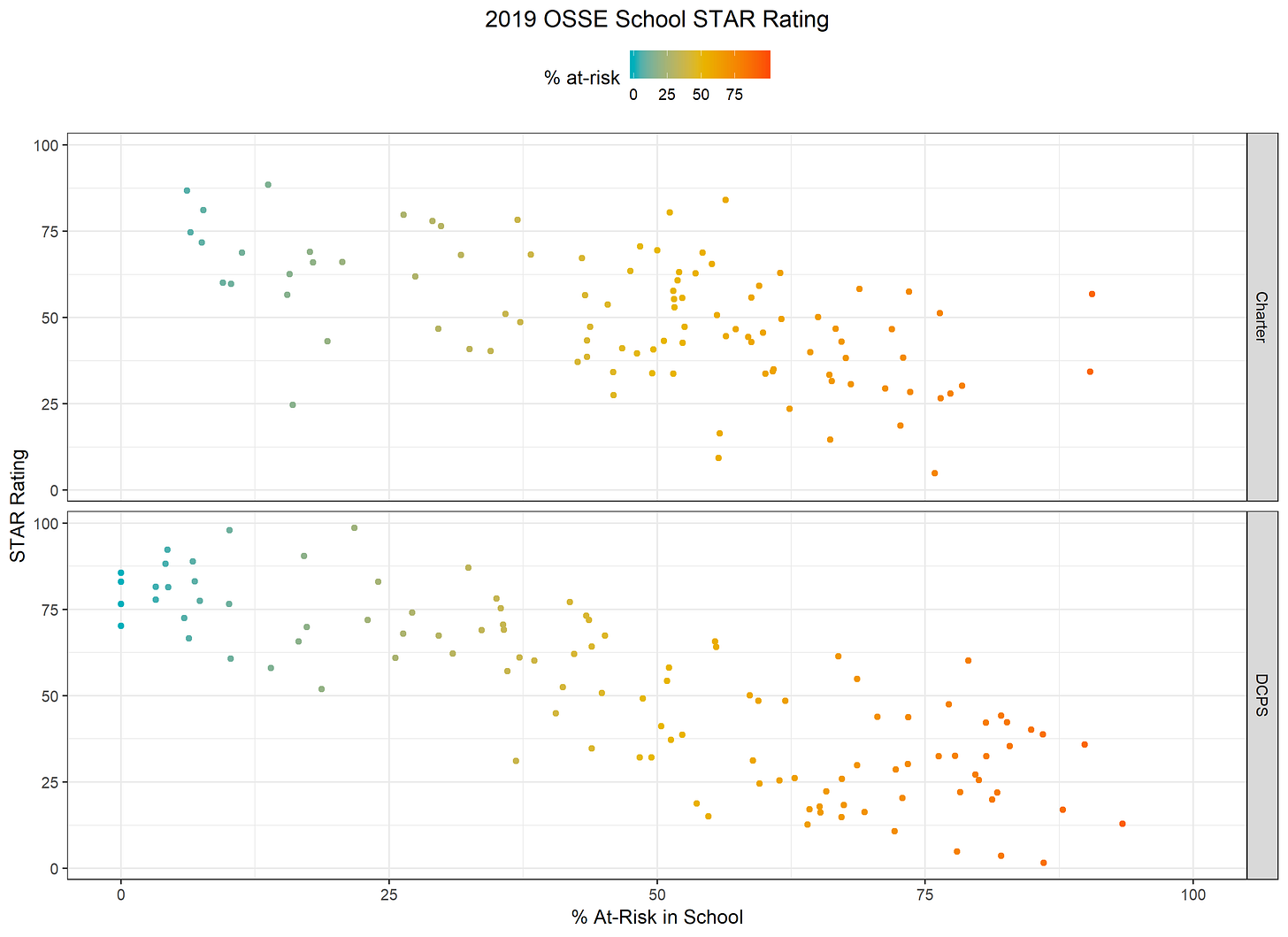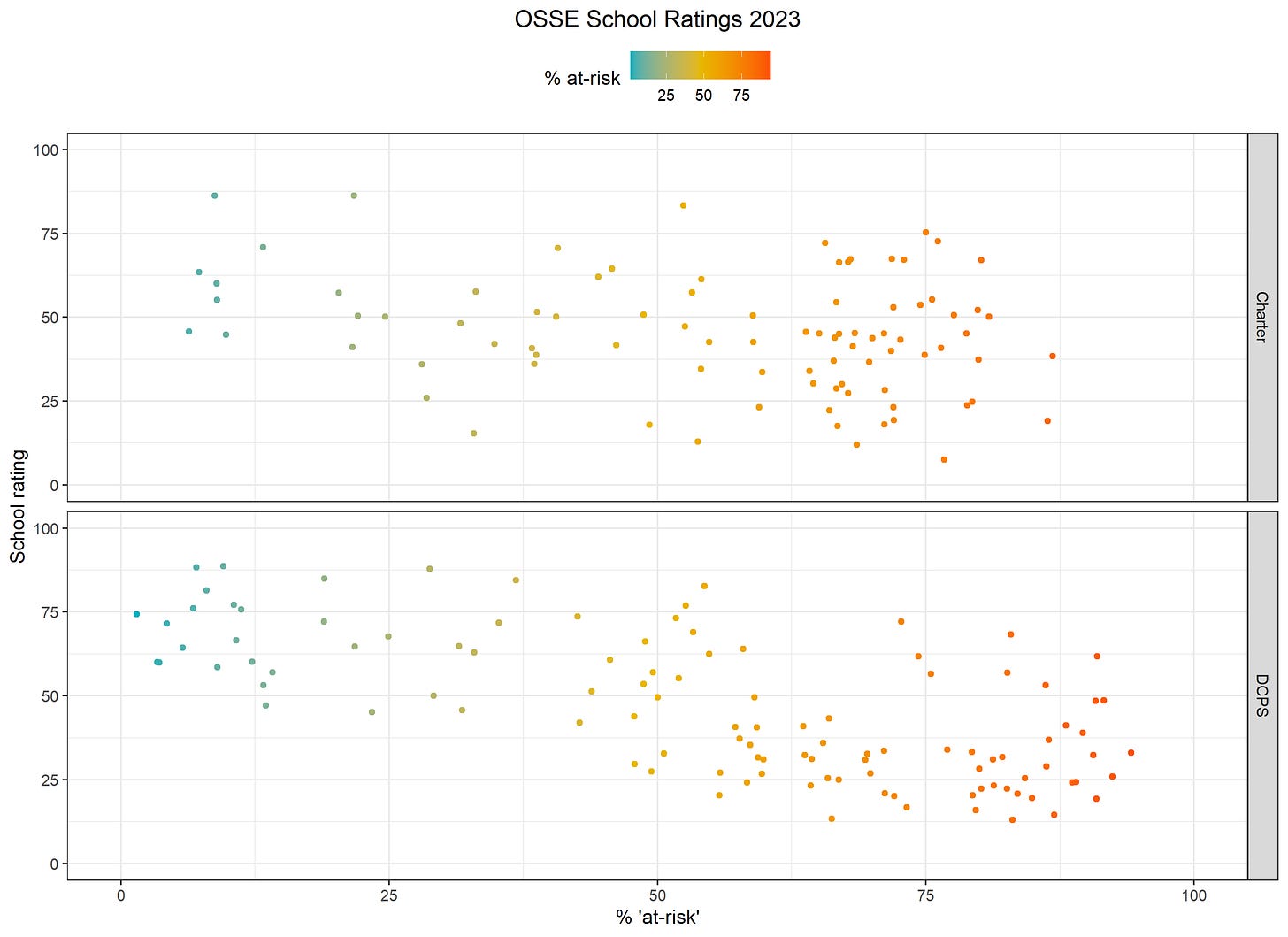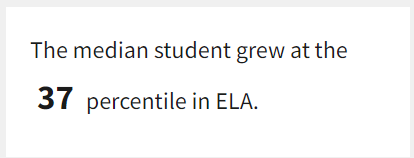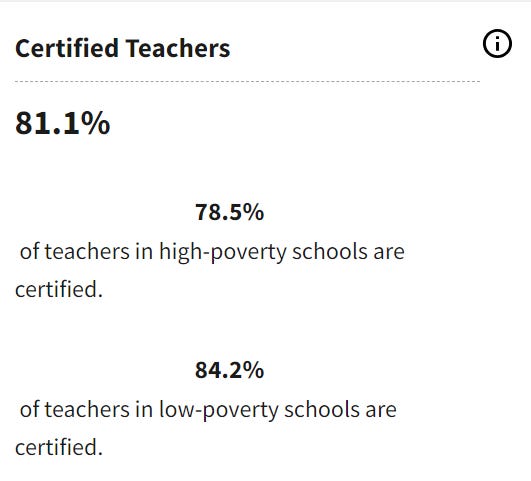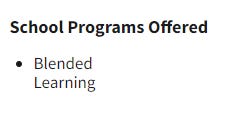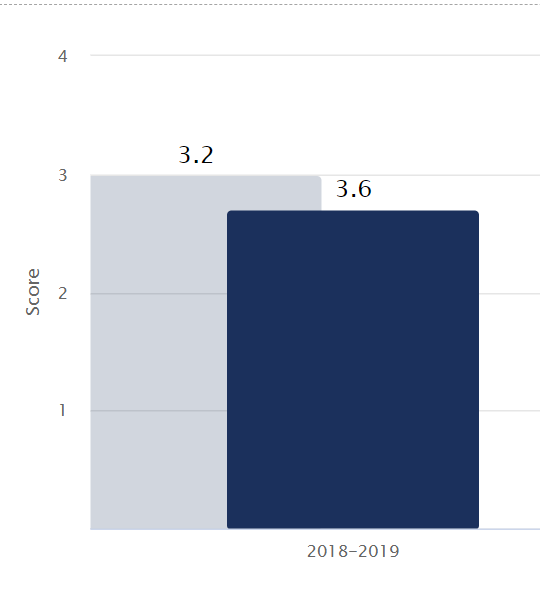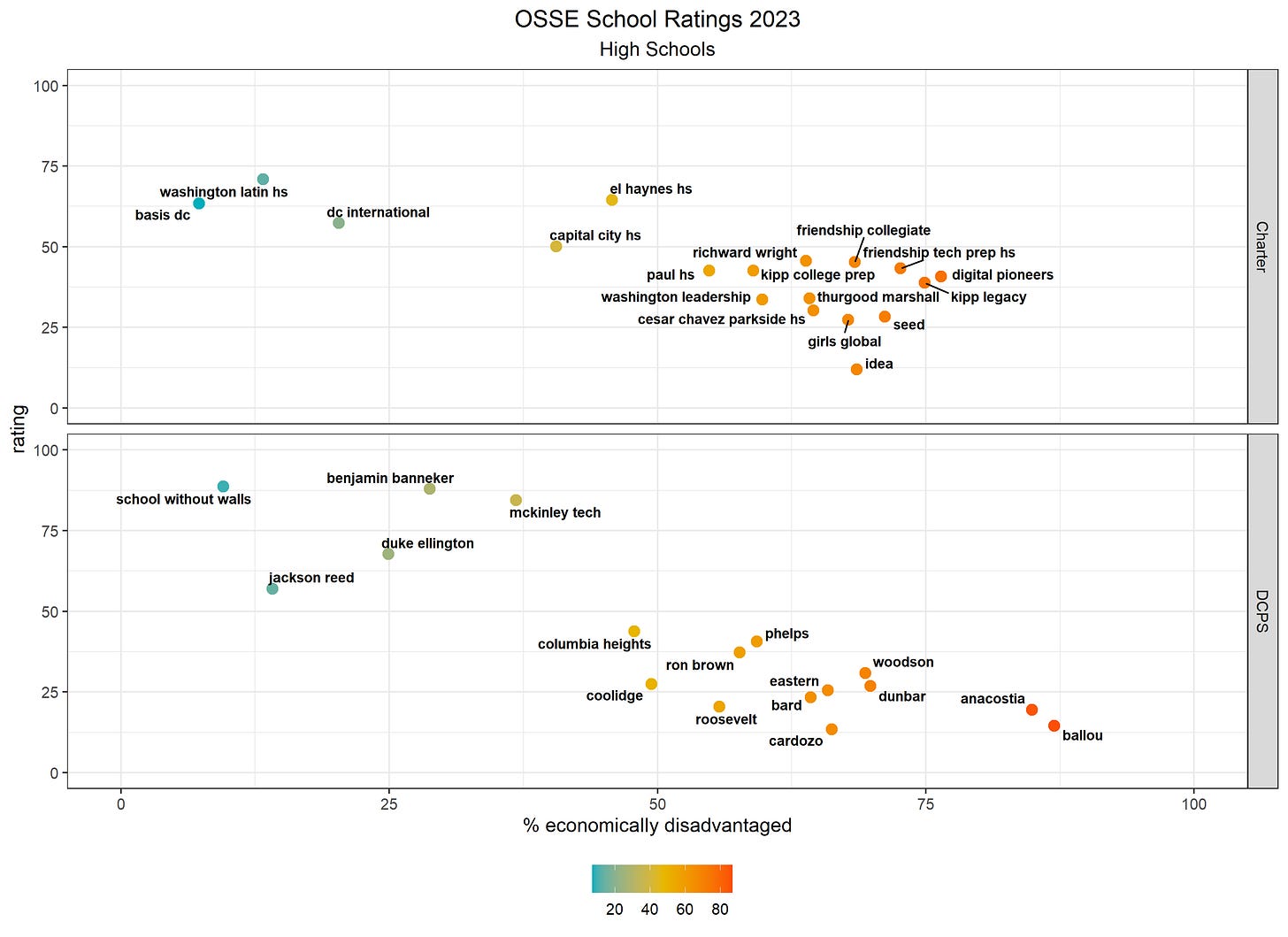What the hell, OSSE
If you didn’t know much about DC education and recently started viewing the Office of the State of the Superintendent of Education’s (OSSE) new school report card webpages, you might think that OSSE is actively trying to further school segregation. Some of the school photos are very old and unflattering, and the descriptions of the schools are incomplete and many years out-of-date. And after receiving a lot of pushback in the past about rating high-poverty schools poorly on their 5-star rating rating, OSSE confidently rolls out with a better version - give them failing scores out of 100 instead!
The new school report card shows a 10? year old photo, which really highlights the no-longer-existing window AC unit and poorly patched holes in the column. What a great first impression!
This is actually what the school looks like.
My children’s school, for example, was rated around 20%. That’s an F, and a low F at that. It’s like the school did absolutely nothing all year but hand in the homework assignment and received a 20% for turning it in. Of course, I don’t believe that the school did nothing all year, nor do I believe the rating is even close to fair or accurate.
OSSE had previously stated that it wanted to make the school ratings less inequitable. If you look at the graphs of school ratings versus % economically disadvantaged in the school in 2019 and 2023, we see slightly more variation in 2023 than in 2019, but we still see the same old problematic relationships between school quality and student compositions.
We also see lower ratings in general for schools serving greater percentages of special education students with greater needs (defined as level 3 or 4 in special education), and this is especially true for DCPS schools. DCPS runs districtwide self-contained classrooms, but these classrooms contribute to school-level ratings even though its a district-run program.
It’s also not lost on me that many of the schools that benefit from the new rating system relative to the prior system are charter schools. This is not entirely surprising, given that OSSE is also under mayoral control and the head of the public charter school board has an influence in who leads OSSE, which poses an obvious conflict of interest. In fact, if you were to conduct an analysis for which schools are “beating-the-odds” given the student populations they serve, DCPS schools appear to do a lot better than their ratings. This tells me that the current accountability system is not adequately controlling for student background characteristics, and is doing so in a way that benefits charter schools more than DCPS schools. No one who has been paying attention in DC education should be surprised, but it still very frustrating to see from a state agency that is supposed to be objective.
On the new school report card, each metric is presented without explanation or context, and is therefore only accessible to users who know what “growth-to-proficiency” or “median growth percentile” means. You can click to figure out the district average, but it’s not intuitive.
OSSE breaks down how much more qualified the teachers are at low-poverty schools than at high-poverty ones, so you can see what you’re missing by not self-selecting into the schools serving the fewest students in poverty. Thanks for the reminder, OSSE! (But only for DCPS schools, since OSSE doesn’t publish the data about teacher qualifications in charter schools.)
According to OSSE, the only programming the school offers is blended learning, which means computers are used sometimes, which is true at 100% of DC public schools. No mention of FoodPrints, math team, accelerated learning groups, academic tutoring, and so on.
OSSE also stretches our imagination with bar graphs where up is down and, at the same time, up is up.
More seriously, my (rhetorical) question back to OSSE is, how does this help? How does it help teacher morale to be told that your school is graded at a 20% when you’ve been working hard to meet student needs and the school faces many challenges due to community poverty and disenfranchisement? How does it help parents who might be interested in school integration but who are afraid that their children won’t receive a basic education at their local schools as a result of OSSE’s low school ratings? How does it help students to know they are attending a “bad” school and they, themselves, must be bad students?
These ratings aren’t about helping students. They are about name and shame, and OSSE does this so well, while not accepting any responsibility for its own role in furthering school segregation and disinvestment in the most underserved schools. Instead of taking any responsibility for any issues facing DC youth - such as high chronic absenteeism - DC leadership eschews all responsibility and instead scapegoats schools instead. We need a better school accountability system in DC, and preferably one that includes reciprocal accountability for OSSE and the Mayor too.
You can let OSSE know what you think about the new school report card here: dcschoolreportcard@dc.gov.
More graphs and notes:
The demographic data mostly come from the PARCC files and so are aligned with students who took the PARCC test. This actually makes sense given the outsized influence of PARCC metrics in determining the school ratings. When the data were suppressed, however, the demographic data came from OSSE’s enrollment files.
I manually entered in school ratings, so it’s very possible (even likely) there are errors. Update: I later checked the values against the electronically published version.
There are many schools missing ratings for various reasons. These include adult/alternative schools and early childhood schools as well as other schools: community college prep, dc prep anacostia, dc prep benning, dc wildflower, eagle academy, friendship armstrong es, friendship blow pierce, friendship chamberlain, friendship ideal, friendship southeast, friendship woodridge, global citizens, i dream, kipp arts and tech, kipp connect, kipp discover, kipp grow, kipp leap, kipp pride, learn, lee montessori, military road. Turns out that many of these schools are missing ratings because they only serve students through grade 3, but this presents an advantage to these schools because they get a pass on the summative score. And, not surprisingly, they are all charters. Hmmm.


